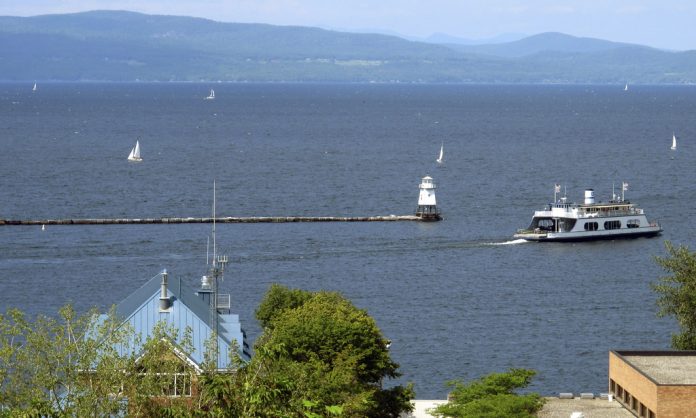Flaws in a Vermont program are preventing the state from controlling phosphorus discharges from certain farms, contributing to severe water quality problems in Lake Champlain and other bodies of water, according to a letter from the U.S. Environmental Protection Agency to state officials.
The Monday letter to the secretary of the Vermont Natural Resources Agency says the program is failing to comply with the Clean Water Act. It directs the state to make significant changes in how it regulates water pollution from concentrated animal feeding operations, or CAFOs, which raise animals in confinement.
There are 37 large and 104 medium CAFOs in Vermont, along with 1,000 small farms that might be considered such operations, according to the EPA.
Two state agencies — Natural Resources and Agriculture Food and Markets — regulate agricultural water pollution in Vermont, which is where the problem lies, the letter states. The division of responsibilities “is interfering with the regulation of Vermont’s CAFOs and preventing Vermont from adequately addressing agricultural water quality,” wrote David Cash, EPA administrator for Region 1 in Boston.
Excess phosphorus runoff from farms, roads and urban areas has fueled toxic algae blooms Lake Champlain, sometimes forcing the closure of beaches. Sources of excess phosphorus into lakes and waterways include fertilizers, leaking septic systems or discharges from wastewater treatment plants, according to the EPA.
The EPA mandated that the state clean up Lake Champlain and in 2016 released new phosphorus pollution limits for the water body.
In Monday’s letter, the EPA concluded that the Agency of Natural Resources must be responsible for CAFO permitting, monitoring, and enforcement, which includes doing routine farm inspections, enforcing management plans for the placement of manure and other nutrients on fields, and administering discharge permits.
Vermont Natural Resources Secretary Julie Moore said Tuesday that the agency takes its obligations under the Clean Water Act very seriously.
“At the same time I think it’s really important to reflect that this is sort of about the operation and administration of government and should not be taken as a reflection on the work being done by farmers,” she said.
The state has regulated farms through no-discharge permits issued by the Agriculture Agency, “so nothing is allowed to leave the farm,” Moore said. The EPA is showing that there is evidence of occasional discharges from farms, often in response to severe weather, she said.
The Conservation Law Foundation, the Vermont Natural Resources Council and the Lake Champlain Committee, an advocacy organization, petitioned the EPA in 2022 to take corrective action or withdraw its authorization of the program related to the regulation of CAFO farms. The foundation released EPA’s letter on Monday, and Elena Mihaly, vice president of Conservation Law Foundation Vermont, said it’s a step in the right direction.
Similar concerns were raised in a 2008 petition filed by the Vermont Law School Environmental and Natural Resources Law Clinic that resulted in a corrective action plan in 2013 in which the state agreed to take steps to improve parts of its program, including its dealings with CAFOs, the letter states.
It’s clear that Vermont has not adequately addressed deficiencies in its CAFO program or complied with the requirements of the 2013 plan, Cash wrote in the letter to the state.
“EPA has closely observed program operations in Vermont for well over a decade and despite having had ample time and opportunity to cure longstanding program deficiencies, many of which were outlined in the 2008 withdrawal petition, ANR has failed to do so,” Cash wrote.
Vermont Agriculture Secretary Anson Tebbetts said the issue “really only deals with a handful of farmers” and “is more like a regulatory box that hasn’t been checked.”
Farmers and the agency are and have been doing tremendous work in keeping pollution out of the lake and waterways, he said.
“The evidence proves through some of the science, the people that are helping to solve the problem over the last decade or so are coming from the farm community,” Tebbetts said. “So the program with education, technical assistance, enforcement, inspections is working.”
Source: post





